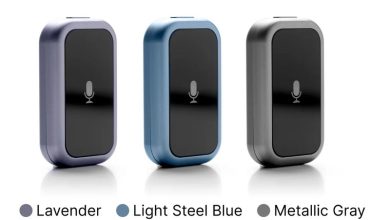
SILVER SPRING, Md., Oct. 18, 2024 /PRNewswire/ — Today, the U.S. Food and Drug Administration is providing an at-a-glance summary of news from around the agency:
- This week, FDA continues ongoing efforts to increase access and supply of IV and peritoneal dialysis (PD) fluids following Hurricane Helene-related damage to Baxter International Inc.’s facility in Marion, North Carolina. Specifically, FDA acted quickly to conduct scientific and regulatory assessments to help facilitate the temporary importation of 23 different IV and PD fluids from five Baxter facilities around the world. These supply improvements, combined with increased output from other manufacturers, should help health care providers get more of the product they need over the coming weeks. For more information and FDA actions, visit the FDA website detailing recovery efforts.
- On Friday, the FDA approved Vyloy (zolbetuximab-clzb,), a claudin 18.2 (CLDN18.2)-directed cytolytic antibody, with fluoropyrimidine- and platinum-containing chemotherapy, for the first-line treatment of adults with locally advanced unresectable or metastatic human epidermal growth factor receptor 2 (HER2)-negative gastric or gastroesophageal junction (GEJ) adenocarcinoma whose tumors are CLDN18.2 positive, as determined by an FDA-approved test. The FDA also approved the VENTANA CLDN18 (43-14A) RxDx Assay (Ventana Medical Systems, Inc./Roche Diagnostics) as a companion diagnostic device to identify patients with gastric or GEJ adenocarcinoma who may be eligible for treatment with zolbetuximab. The most common serious adverse reactions in the SPOTLIGHT trial (≥2%) were vomiting, nausea, neutropenia, febrile neutropenia, diarrhea, intestinal obstruction, pyrexia, pneumonia, respiratory failure, pulmonary embolism, decreased appetite, and sepsis. The most common serious adverse reactions in the GLOW trial (≥2%) were vomiting, nausea, decreased appetite, decreased platelet count, upper gastrointestinal hemorrhage, diarrhea, pneumonia, pulmonary embolism, and pyrexia. Full prescribing information for Vyloy will be posted on Drugs@FDA.
- On Thursday, the FDA and CDC released the full 2024 National Youth Tobacco Survey findings on youth use of all categories of tobacco products. According to the latest data release, youth tobacco use dropped to the lowest level recorded in the survey’s 25-year history. Within the past year alone, at least half a million fewer students are using tobacco products, contributing to this important progress. The observed decline in tobacco product use is likely the result of multiple factors, including the implementation of evidence-based strategies at the national, state and local levels.
- On Thursday, the FDA announced the final guidance, Considerations for Long-Term Clinical Neurodevelopmental Safety Studies in Neonatal Product Development. The guidance provides a framework for considering neurodevelopmental evaluations that could be useful to assess long-term safety of a medical product intended for use in newborns, and replaces draft guidance issued in February 2023 with the same name. Treating newborns with medical products coincides with a time of critical growth and development. Long-term safety studies are often important to assess the safety of medical products used in newborns because important health effects resulting from medical products used during the newborn period may not become apparent until after a baby has grown older.
- On Thursday, the FDA published a Spotlight on CDER Science featuring CDER researcher that evaluated pH adjustment and addition of antioxidants in tablet formulations using bumetanide (BMT) as a model drug product to mitigate the formation of N-nitrosobumetanide (NBMT). NBMT is a known nitrosamine drug substance-related impurity (NDSRI) that may form in BMT. This research helped support CDER’s Control of Nitrosamine Impurities in Human Drugs guidance by providing manufacturers with potential approaches to drug formulation to mitigate or prevent formation of NDSRIs in solid state (tablet) drug products.
- On Thursday, the FDA and CDC announced the end of an outbreak. The FDA and CDC had assisted state and local partners from the Wisconsin Department of Agriculture Trade and Consumer Protection and Wisconsin Department of Health Services in an investigation of Salmonella Enteritidis infections linked to eggs supplied by Milo’s Poultry Farms, LLC of Bonduel, Wisconsin (WI). In response to this investigation, Milo’s Poultry Farm, LLC voluntarily recalled all eggs supplied by their farm. At this time, all recalled eggs should be off the market and beyond shelf life. As of October 17, 2024, CDC has declared the outbreak over and the FDA’s investigation is complete.
- On Wednesday, the FDA updated the Biosimilar Curriculum Toolkit, to help educate professional students in health care degree programs for medicine, nursing, pharmacy, and physician associates, as well as practicing professionals, about biosimilar and interchangeable biosimilar products and the regulatory approval pathway in the United States. The agency encourages health professionals or students and faculty in health professional schools to review the updated toolkit to learn more about how biosimilars are an important therapeutic option for American patients.
- On Tuesday, the FDA’s Center for Devices and Radiological Health (CDRH) announced a pilot that provides device trial participation snapshots to highlight certain information about the intended uses of a device, its benefits and risks, and the diversity of participants in clinical trials for certain new medical devices. This information provides consumers and health care professionals with key information about clinical trials that supported the FDA’s approval of certain new medical devices and may provide helpful information for an individual’s discussions with their health care provider. Providing trial participation snapshots is part of an overall FDA effort to increase transparency around clinical trials for medical products and diversity in clinical trial participation and supports CDRH’s overall efforts to advance health equity.
- On Tuesday, the FDA provided new information for how to prevent the risk of damage caused by electronic interference with wearable devices including diabetes devices, cardiac implantable devices, and neurostimulators. Most people can undergo medical radiation procedures, such as CT scans, without any problems. However, the FDA has received a few reports of problems linked to possible interference between certain imaging technologies and electronic medical devices.
- On Tuesday, the FDA and the National Institutes of Health (NIH) highlighted recommendations and opportunities to promote innovation in research and development of smoking cessation therapies, for which there is an urgent need. The authors provided an update on regulatory pathways for smoking cessation treatment, as well as an overview of innovative therapeutic targets, research gaps, and opportunities. The commentary is publishing in advance of an FDA and NIH Joint Public Meeting on advancing smoking cessation priorities, which is being held on Monday, Oct. 21, from 9 a.m. to 4:30 p.m. EDT. Registration for the meeting is available here.
- On Tuesday, CDER published 7 Things to Know About Drug Shortage Management. The editorial describes how the FDA works closely with the pharmaceutical industry and other stakeholders to help prevent drug shortages and to lessen the impact on patients any time there is a delay in the availability of medicines. Ensuring access to safe, effective, high-quality medicines is one of our top priorities.
- On Tuesday, the FDA approved for marketing Novocure GmbH’s Optune Lua, a portable, battery-powered device that produces alternating electrical fields, called tumor treating fields (TTFields), within a patient’s body to treat metastatic non-small cell lung cancer along with concurrent drug treatments in adults who have progressed on or after a platinum-based chemotherapy. The device includes electrodes that are placed on the surface of the patient’s thorax (chest) by a health care professional to deliver low-intensity TTFields. The unique shape and special characteristics of rapidly dividing tumor cells make them susceptible to damage when exposed to these fields, which has been shown to halt tumor growth. Devices incorporating Novocure’s TTFields technology have been previously approved in 2015 to treat certain adult patients with glioblastoma multiforme (an aggressive form of brain cancer) and approved in 2019 under a Humanitarian Device Exemption to treat certain kinds of malignant pleural mesothelioma (a rare cancer that grows in the membrane that lines the walls of the chest and lungs).
Additional Resources:
Media Contact: FDA Office of Media Affairs, 301-796-4540
Consumer Inquiries: 888-INFO-FDA
The FDA, an agency within the U.S. Department of Health and Human Services, protects the public health by assuring the safety, effectiveness, and security of human and veterinary drugs, vaccines and other biological products for human use, and medical devices. The agency also is responsible for the safety and security of our nation’s food supply, cosmetics, dietary supplements, radiation-emitting electronic products, and for regulating tobacco products.
View original content to download multimedia:https://www.prnewswire.com/news-releases/fda-roundup-october-18-2024-302280799.html
SOURCE U.S. Food and Drug Administration





